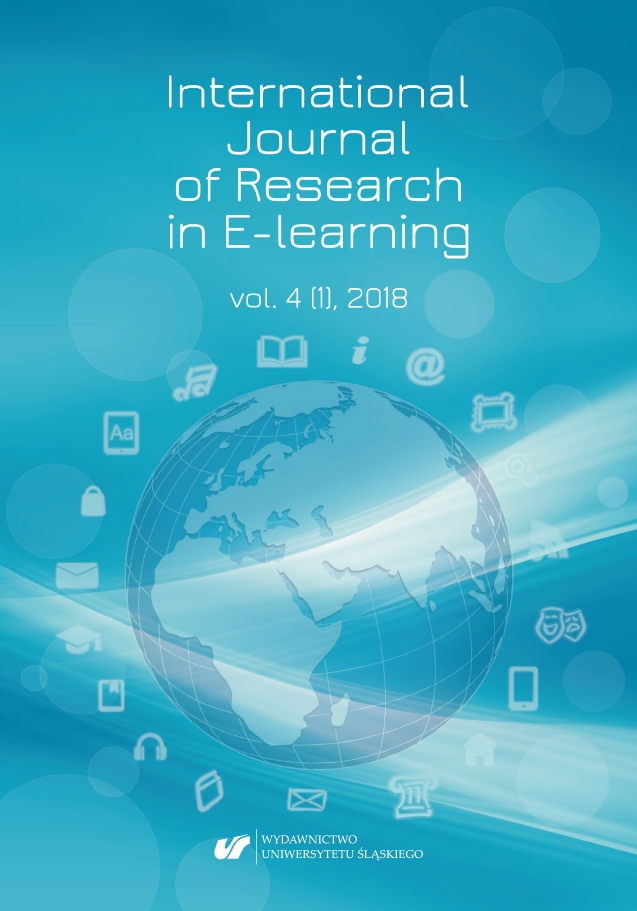Bloom, B. S. (Ed.). (1956). Taxonomy of educational objectives. Handbook 1: Cognitive domain. New York: David McKay Company.
Boyle, T. (1997). Design for multimedia learning. London: Prentice Hall.
Briner, M. (1999a). Behaviorism. University of Colorado. Accessed 10 March 2002. Retrieved from http://curriculum.calstatela.edu/faculty/psparks/theorists/501behav.htm.
Briner, M. (1999b). Constructivism. University of Colorado. Accessed 10 March 2002. Retrieved from http://curriculum.calstatela.edu/ faculty/psparks/theorists/501const.html.
Chute, A. G., Thompson, M. M., & Hancock, B. W. (1999). The McGraw-Hill handbook of distance learning. New York: McGraw-Hill.
David, L. (2007). “Behaviorism.” In Learning Theories, 31 January. Accessed 25 January 2018. Retrieved from https://www.learning-theories.com/behaviorism.html.
David, L. (2015). “Constructivism.” In Learning Theories, 20 June. Accessed 25 January 2018. Retrieved from https://www.learning-theories.com/constructivism.html.
Downes, S. (2005). E-learning 2.0. Accessed 8 December 2007. Retrieved from http://www.downes. ca/post/31741.
Downes, S. (2007a). E-learning 2.0 in development. Accessed 10 January 2008. Retrieved from http:// www.slideshare.net/Downes/elearning-20-in-development.
Downes, S. (2007b). E-learning 2.0. Accessed 10 January 2008. Retrieved from http://www.elearn mag.org/subpage.cfm?section=articles&article=29-1.
Downes, S. (2007c). Free learning and control learning. Accessed 8 December 2007. Retrieved from http://www.downes.ca/.
Downes, S. (2007d). Web 3.0 and learning. Accessed 10 December 2007. Retrieved from http://www. downes.ca/cgi-bin/page.cgi?post=36700.
Fleming, N. (2002). VARK and active learning. Accessed 21 March 2004. Retrieved from http:// www.active-learning-site.com/vark.htm.
Gardner, H. (1983). Frames of mind: The theory of multiple intelligences. New York: Basic Books. Goleman, D. (1999). Trabalhar com inteligencia emocional. Lisboa: Temas e Debates.
Lima, J. & Capituo, Z. (2003). E-learning e e-conteúdos. Porto: Centro Atlantico.
Means, B., Toyama, Y., Murphy, R., Bakia, M., & Jones, K. (2009). Evaluation of evidence-based practices in online learning: A meta-analysis and review of online learning studies. Washington, DC: US Department of Education, Office of Planning, Evaluation, and Policy Development.
Moore, M. G. & Kearsley, G. (1996). Distance education: A systems view. Boston, MA: Wadsworth Publishing.
Moore, M. G. & Thompson, M. M. (1997). The effects of distance learning. University Park, PA: American Center for the Study of Distance Education, Pennsylvania State University.
Moore, M. G. (1973). Towards a theory of independent learning and teaching. Journal of Higher Education, 44, 661–679.
Moore, M. G. (2001). Standards and learning objects. The American Journal of Distance Education, 15(3), 1–3.
Murphy, E. (1997). Characteristics of constructivist learning & teaching. Accessed 10 May 2005. Retrieved from http://www.stemnet.nf.ca/~elmurphy/emurphy/cle3.html.
O’Reilly, T. (2005). What is Web 2.0: Design patterns and business models for the next generation of software. Accessed 28 August 2008. Retrieved from http://www.oreillynet.com/pub/a/oreilly/ tim/news/2005/09/30/what-is-web-20.html.
Reigeluth, C. M. & Frick, T. W. (1999). Formative research: A methodology for creating and im- proving design theories. Accessed 25 January 2018. Retrieved from http://www.indiana.edu/~sys chang/decatur/documents/26formres.pdf.
Reis, A. (2008a). New technologies and didactics in new methodologies environment. Innsbruck University Press.
Reis, A. (2008b). From e-learning 1.0 to e-learning 3.0 (e-learning generations). Izhevesk University International Conference, Russia.
Reis, A., Basogain, X., Olabe, M., Espinosa, K., & Pinto, P. (2009). Interactividad 3.0 en la e-educación. In V Jornada del Campus Virtual Universidad Complutense de Madrid, Buenas Prácticas e Indicios de Calidad (pp. 154–161). February 2009, Madrid.
Reis, A., Blázquez, F., & Cubo, S. (2013). How should we teach, in the school of the future? In Smyrnova-Trybulska E. (Ed.), E-learning and lifelong learning (pp. 13–38). Katowice–Cieszyn: Studio Noa for University of Silesia. Retrieved from http://weinoe.us.edu.pl/sites/weinoe.us.edu. pl/files/media/e-learning_and_lifelong_learning.pdf.
Rosenberg, M. J. (2001). E-learning: Strategies for delivering knowledge in the digital age. New York: McGraw-Hill.
Rosenberg, M. J. (2006). Beyond e-learning: Approaches and technologies to enhance organizational knowledge, learning, and performance. San Francisco: Pfeiffer.
Schuman, L. (1996). Perspectives on instruction educational technology. Accessed 18 August 2005. Retrieved from http://edweb.sdsu.edu/courses/edtec540/Perspectives/Perspectives.html.
Siemens, G. (2005). Connectivism: A learning theory for the digital age. Accessed 14 September 2008. Retrieved from http://www.elearnspace.org/Articles/connectivism.htm.
Silva, A. & Wehner, J. M. (1996). Importance of strain differences in evaluations of learning and memory processes in null mutants. Mental Retardation and Developmental Disabilities Research Reviews, 2(4), 243–248.
Silva, A., Frankland, P., Ohno, M., Takahashi, E., Chen, A., Costa, R., & Kushner, S. (2003). Pharmacologically Regulated Induction of Silent Mutations (PRISM): Combined pharma- cological and genetic approaches for learning and memory. Neuroscientist, 9(2), 104–109.
Silva, A., Josselyn, S., & Kida, S. (2004). Inducible repression of CREB function disrupts amygdala- dependent memory. Neurobiology of learning and memory. Not published (PDF).
Skinner B. F. (1961). Teaching machines. Scientific American, 205, 90-112. doi:10.2307/1926170. Smith, P. L. & Ragan, T. J. (1999). Instructional design. 2nd ed. New York: John Wiley & Sons, Inc. Snelbecker, G. (1999). Some thoughts about theories, perfection and instruction. In Reigeluth, C. M.,
Instructional-design theories and models: A new paradigm of instructional theory (pp. 31–47). New Jersey: Lawrence Erlbaum Associates.
Verduin, J. & Clark, T. (1991). Teorias do ensino а distancia. Accessed 20 August 2006. Retrieved from http://www.prof2000.pt/users/ajlopes/af22_ead/plano3.htm.
Wilhelmsen, S., Asmul, S., & Meist Ad, O. (1999). CSCL: Constructivism. Accessed 2 April 2005. Retrieved from http://www.uib.no/People/sinia/CSCL/web_struktur-836.htm.
Google Scholar


